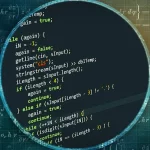
An Introductory Guide to Single-Cell Analysis for Biologists
September 26, 2023Single-Cell Analysis
Introduction:
Single-cell analysis involves studying the transcriptomics, genomics, proteomics, and metabolomics at the single-cell level. This is in contrast to traditional methods that study bulk populations of cells, potentially obscuring variations and nuances between individual cells.
Objective:
Understanding the heterogeneity within cell populations to identify different cell types, states, and interactions, which is crucial in fields like oncology, immunology, and developmental biology.
Getting Started in Single-Cell Analysis
Step 1: Define Objectives
- Identify the biological question you are interested in.
- Decide what type of single-cell analysis (RNA, DNA, Protein) is appropriate to answer your question.
Step 2: Experimental Design
- Choose the right single-cell technology (e.g., 10x Genomics, Drop-seq).
- Plan sample collection, preparation, and sequencing.
Step 3: Data Pre-processing
- Quality control of raw sequencing data.
- Alignment of reads to reference genome.
- Quantification of gene expression levels.
Step 4: Data Analysis
- Normalization and scaling of expression data.
- Dimensionality reduction (PCA, t-SNE, UMAP).
- Clustering to identify cell populations.
- Differential expression analysis to identify marker genes.
Step 5: Interpretation
- Assign cell types/states based on marker genes.
- Pathway and network analysis to infer biological functions.
Step-by-Step Guide for Beginners
1. Learning Basic Bioinformatics
Before diving into single-cell analysis, familiarize yourself with basic bioinformatics concepts and tools:
- Learn the basics of programming (preferably in R or Python).
- Gain knowledge on handling biological databases and data formats (FASTA, FASTQ, BAM, SAM).
2. Single-Cell Sequencing Data Processing
Start working with available single-cell datasets to practice:
- Download publicly available single-cell RNA-seq datasets (e.g., from GEO, SRA).
- Use tools like Cell Ranger (10x Genomics) for data preprocessing.
cellranger count --id=sample_id --transcriptome=reference_transcriptome --fastqs=path_to_fastqs
3. Data Analysis in R or Python
Learn to analyze processed data in R or Python using packages/libraries like Seurat (R) or Scanpy (Python).
In R with Seurat:
library(Seurat)
# Load data
seurat_object <- Read10X(data.dir = "path_to_cellranger_output/filtered_feature_bc_matrix")
# Create a Seurat object
seurat_object <- CreateSeuratObject(counts = seurat_object)
# Normalize, find variable features, scale data
seurat_object <- NormalizeData(seurat_object)
seurat_object <- FindVariableFeatures(seurat_object)
seurat_object <- ScaleData(seurat_object)
# Run PCA, t-SNE, and cluster cells
seurat_object <- RunPCA(seurat_object)
seurat_object <- RunTSNE(seurat_object)
seurat_object <- FindClusters(seurat_object)
In Python with Scanpy:
import scanpy as sc
# Read data
adata = sc.read_10x_mtx("path_to_cellranger_output/filtered_feature_bc_matrix")
# Normalize, find variable genes, scale data
sc.pp.normalize_total(adata, target_sum=1e4)
sc.pp.log1p(adata)
sc.pp.highly_variable_genes(adata, min_mean=0.0125, max_mean=3, min_disp=0.5)
adata = adata[:, adata.var.highly_variable]
sc.pp.scale(adata, max_value=10)
# Run PCA, UMAP, and cluster cells
sc.tl.pca(adata, svd_solver='arpack')
sc.tl.umap(adata)
sc.tl.leiden(adata)
4. Result Interpretation and Visualization
Learn to interpret the results, identify cell types, and visualize the data:
- Identify cell clusters using known marker genes.
- Visualize clusters using t-SNE/UMAP plots.
- Interpret differential expression results.
5. Further Learning
- Deepen your knowledge about advanced topics like trajectory analysis, multi-omics integration, spatial transcriptomics.
- Practice analyzing different datasets and try different analysis methods and tools.
6. Additional Resources
- Books: There are plenty of books on bioinformatics, single-cell analysis, and R/Python programming.
- Online Courses: Websites like Coursera and EdX offer courses in bioinformatics and data analysis.
- Forums and Communities: Websites like Stack Overflow and BioStars are excellent resources for getting help with bioinformatics queries.
- Tutorials and Workshops: Online tutorials (e.g., from Seurat, Scanpy) and workshops (e.g., by Hemberg Lab) can be extremely helpful.
In Summary
Starting with single-cell analysis may seem daunting, but with a structured approach to learning and practical application, it can be highly rewarding. The most crucial steps are defining clear objectives, getting hands-on experience with real datasets, and continuously learning about new methods and technologies in the field.


















